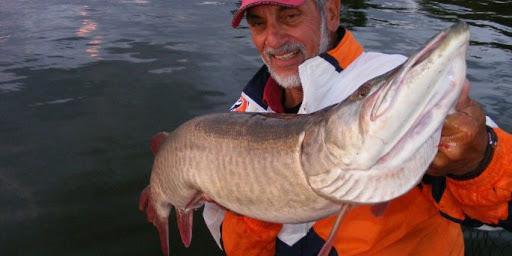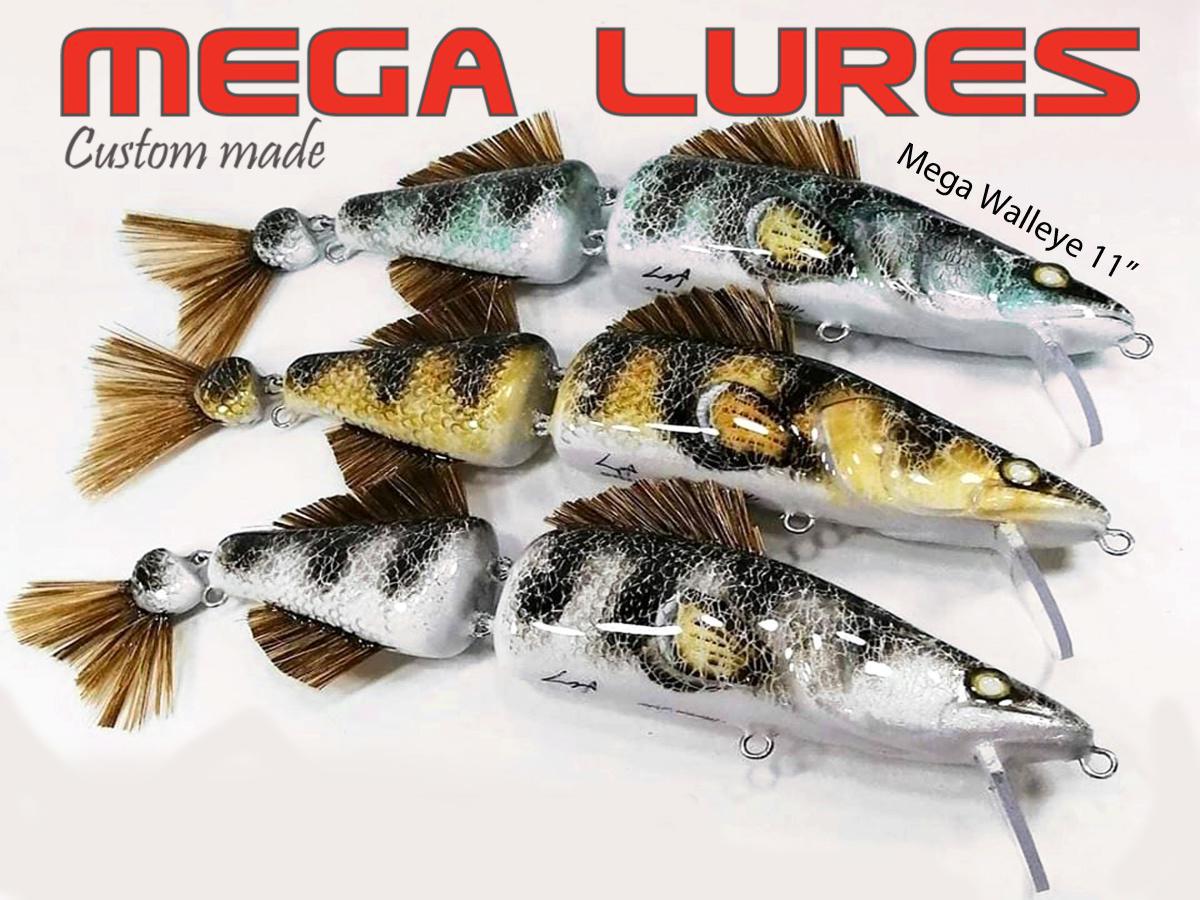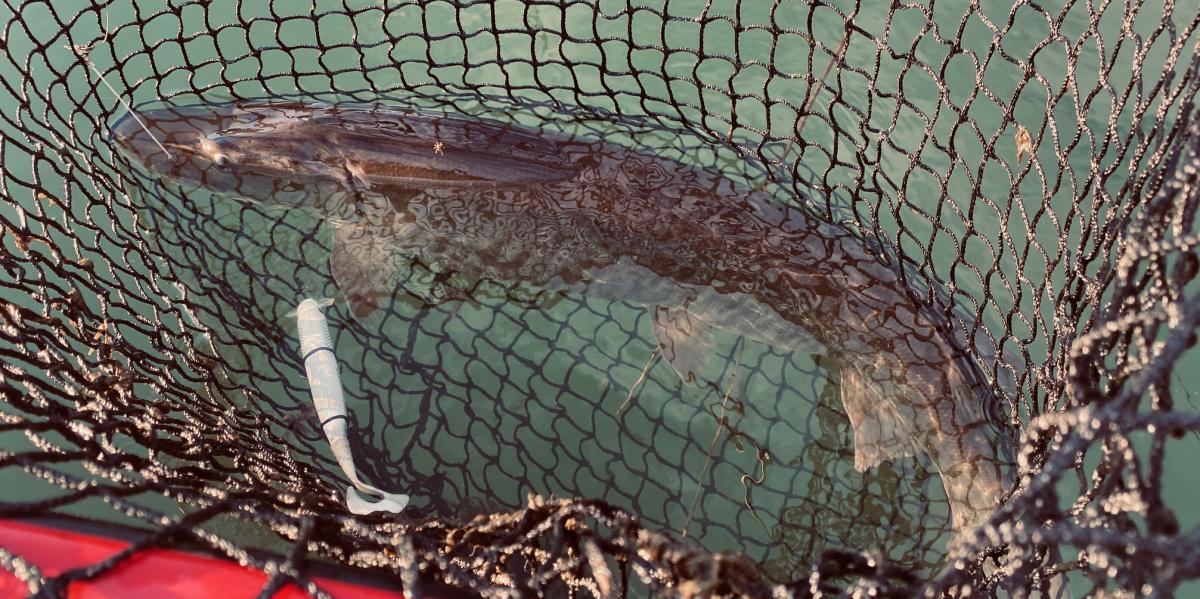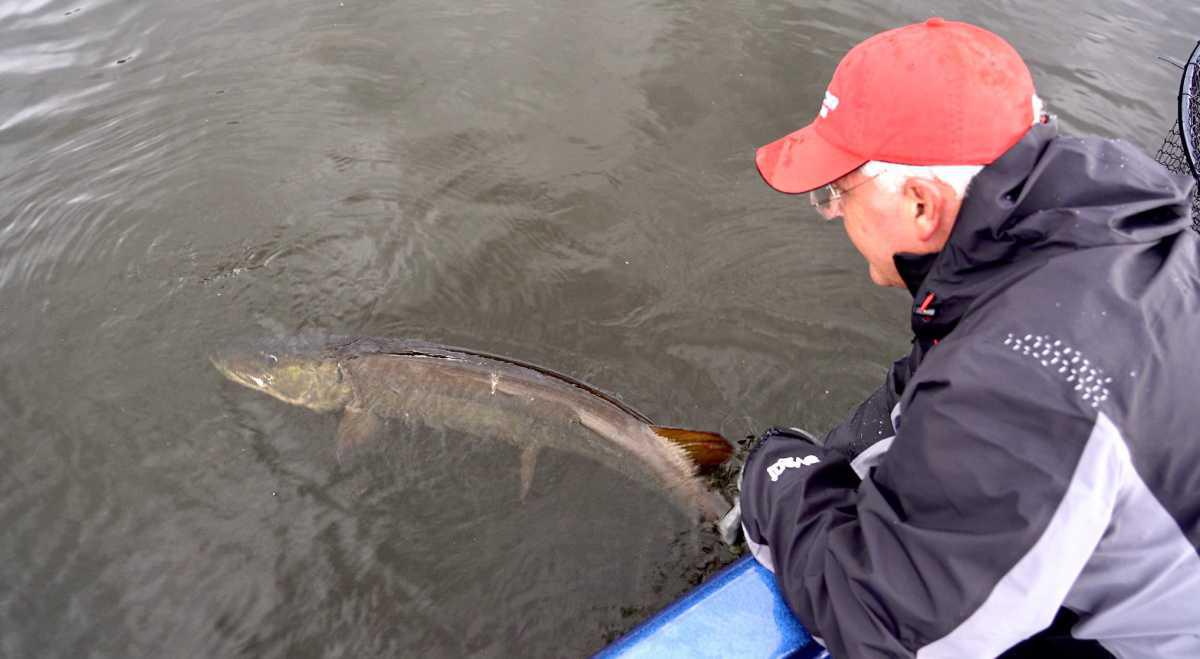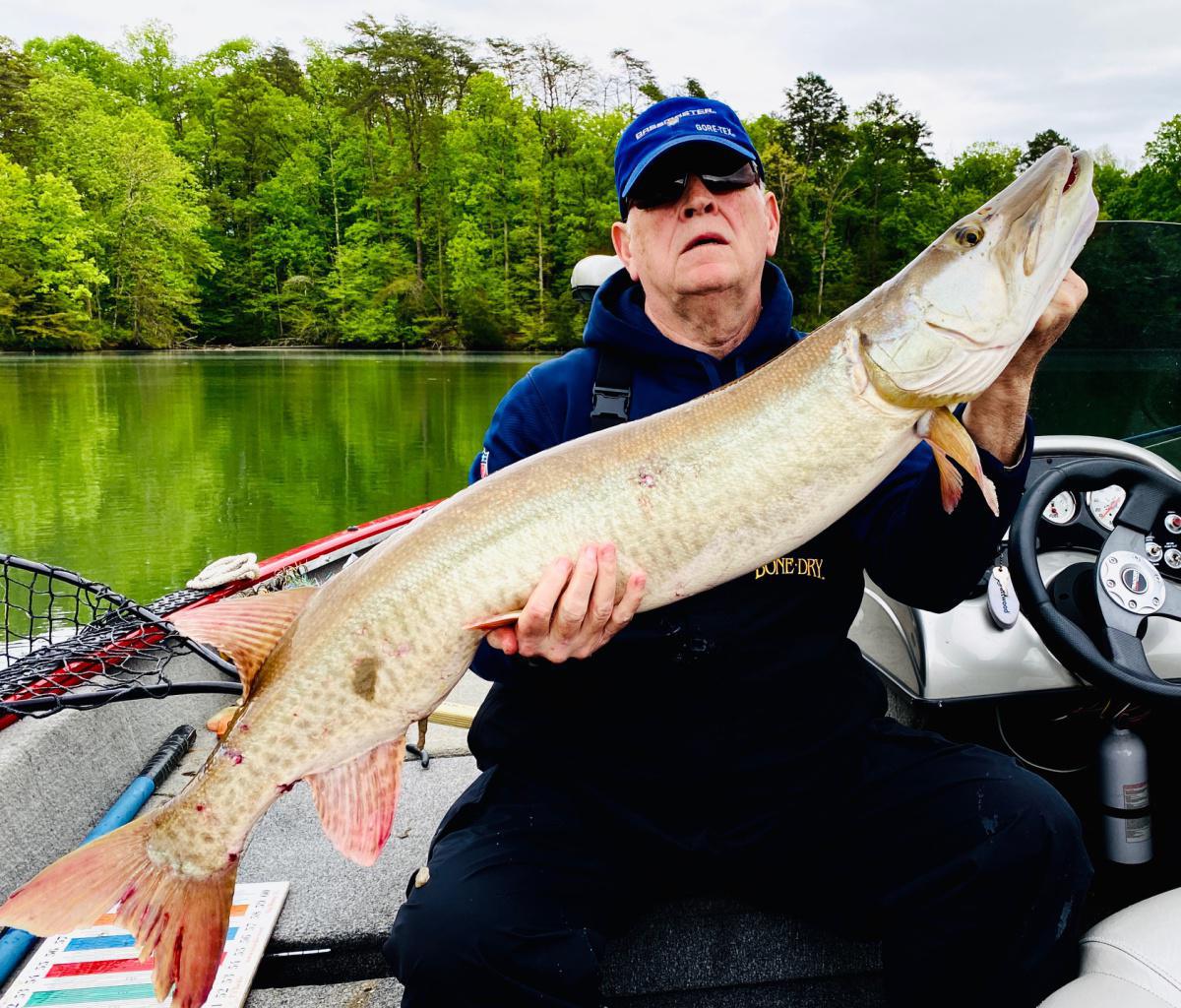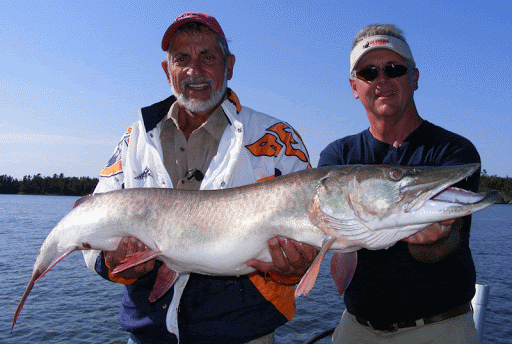Most musky anglers have run through the same progression of goals. First you just want to catch a musky…any musky. Then you want to catch a bunch of muskies. Finally the hunt for big fish is on. While you are sharpening your skills at catching muskies, you start to realize what it takes to catch a real trophy. Often the “numbers lakes” you are fishing offer little opportunity to bag that 50-plus incher, so you start zeroing in on noted big fish waters; usually bigger bodies of water where the fish can grow and thrive by not being as pressured as much as they would have been in smaller waters. Next comes the strategy of when may be the best times to pursue the quest of your trophy fish. After your game plan comes together and you are on the water, now comes the hard part…finding the bigger fish as fast as possible.
There are many places that can hold a big musky, but the three spots we will be examining are sure-fire places for harboring a giant. A big fish can easily be on a short rock point or small weed bed, but these smaller spots will usually be connected or be very close to a major structural element. Another factor to consider is how much “character” a given spot has. The more character a structure has, the more likely a big fish will use it and hold there for longer periods of time.
Examples of character; an edge that has numerous points and cuts, rather than being mostly straight, or a point that extends out at an angle creating a sharper inside turn on one side. Quality of cover also contributes to character. A clean structure may only draw a musky under limited conditions, and even then the fish usually won’t hold their very long. Add some short-growing sand grass and the spot gets better. Some scattered boulders are another plus, and a solid patch of cabbage or coontail tossed in usually makes it a great spot that will not only draw muskies, but has the ingredients to hold various types of forage that will keep fish interested in staying on the structure for longer periods of time.
Complexes
One of my absolute favorite spots for consistent big fish action is a complex of islands, humps, ridges, and possibly a smaller weed bed or two, located on the edge of a deep basin, large open water area, or when it is near a link between a shallower section of the lake and deeper water. The complex doesn’t have to have all these ingredients, but it should have at least two or three of them. Spots like this often have a lot of action from moving fish. It’s not like if you find a big musky way back in a flatter area of the lake where there is no link to deeper water, because that fish will often stay there until it’s caught or spooked. Complexes located in the types of areas mentioned often attract roaming muskies, so if you catch one another may quickly move in. There is also a good chance several big ones may inhabit the spot. That link to adjacent deep water is important because open water muskies often slide into these spots on a regular basis.
Because these spots can actually be quite complex with rocks just under the surface, it’s smart to slowly move around the perimeter and scan the waters when you have calmer, mid-day conditions. On one of the best big fish complexes I have ever found, I was slowly motoring around it during a calm, sunny mid-day lull, while tossing a top water up into the shallower rocks. Not even remotely expecting a strike, a 50-incher slowly came up out of the shadows between the rocks and gently sucked in the lure like a trout eating a bug off the surface. Through the years this complex produced 11 or 12 muskies for me and a friend, one of which was less than 30 pounds, with the biggest well into the 40-pound range.
Make sure you really examine a complex. I have found several that had small weed beds tucked into dips between rock rises. Also secondary rises, ridges, or small humps often exist just outside the main complex. If you find a good looking complex that has character and you don’t see a fish off it after fishing it several times, there are generally two things that are happening; one you are missing one of these small secondary spots; or two the complex is receiving substantial fishing pressure. If that’s the case, only fish it under absolute prime conditions, such as at dusk, during light rains, or just before or right after a major weather change.
A lot of time I’ll fish a spot like this with rubber (Medusa, Bulldog, and Red October Tube) just to get a follow, then will return right at dark and often catch the fish. One of the biggest muskies I caught off a complex was raised off a small secondary hump during late morning. I went back right before dark and caught the fat 54-incher on a Top Raider on the first turn at the boat. This has happened with big muskies many times.
Once you understand the general lay-out of a complex, make a few zigzag trolling passes outside of its perimeter. Often you will un-cover secondary spots that receive little or no fishing pressure. One final tip-if you are only contacting medium-size muskies off a great-looking spot in big fish waters, this is a sign that you are missing a smaller key spot(s) adjacent to the main structure.
Slots
This is a spot that gets ignored quite a bit. The biggest musky I ever saw came out of a shallow wind-blown slot with scattered cabbage that was no more than 5-6 feet deep. I had just caught a 40-inch pike, released it and was taking a 700 series BucherTail out of the nets meshing when I noticed a disturbance around the pike which was flopping around the surface. I told my partner to cast his bucktail over there. About two cranks after it hit the water there was a smashing strike, and a brief hook-up. After bringing his lure in we noted that two prongs on the bucktails treble hook were bent outward. I quickly fired my bucktail out and had a strike. A hard hook-set and I was soon skittering a 20-inch pike across the surface. As it neared the boat a giant that was following it suddenly spun out. I saw the last half of the fish and it was super thick and had a tail that looked like it was at least 12-inches across. I knew it was a monster, but when we went to revive the pike and saw the super-wide bite marks from musky that was trying to eat a 17-18-pound pike, my suspicions were really confirmed.
I think slots attract muskies for several reasons. Since a slot is basically a necked down between two more open areas of water, there is an increase of current through the opening. This is a big plus in attracting muskies. Also, I view these openings as sort of a toll booth for musky forage fish. As they move through these narrower areas and become more vulnerable, some are going to pay the toll…with their life.
Slots come in many varieties…wide, narrow, deep and shallow. As a general rule of thumb, the shallower a slot, its best chance of holding a giant is when the wind is whipping through it, or under very low light conditions. I imagine night fishing would also be an excellent option, but I haven’t done that in years. In the rocky “shield lakes” in the muskies most northerly range, slots between islands are common place. The ultimate slot condition for day-time action would be a deeper one with cabbage or coontail across the opening. This condition could easily hold a musky any time of the day and under just about any weather condition. A rock-studded slot would be second best, while one that’s clean or only has short grass would offer less potential.
The wider and deeper a slot, the more apt that the banks lining the neck-down should be fished. Character of the shoreline then comes into play, with banks having small cups, points, boulders, fallen trees, or any other structure/cover features having the most potential. On wider and/or deeper slots, muskies will often suspend out in the open water. So some zigzag trolling passes through the slot are a good idea before motoring off to another spot.
Wind is a big plus for fishing a slot, and often the more the better. Muskies will usually hold in wind-related positions, but when the wind is really strong, you may have to fish off-wind spots to find the fish. The back-side or downwind area of the slot where the current curls around the opening may be a key area. Also cups or pockets in the slot where a fish can duck in are also worth checking. If the calmer back side has a good feature of two that has produced action in the past, fish it.
Big Flats
When fishing lakes that are more fertile, weeds become a big player in locating muskies. One feature that I immediately look for is where the shallower water extends the farthest out into the deeper water. This is a great starting point in your hunt for the lakes bigger muskies. Here again the word character comes into play. The more cover and types of cover the flat has the better, and where the flat is situated also comes into consideration. Also any satellite smaller structure/cover options nearby would also be a plus. My goal is to find a structure that appeals to a big musky for the longest period of time. The more a flat has to offer, the more likely a musky will call it home.
Let me create the ultimate flat. First, it’s large and extends out quite a way from shore. The top of the flat has at least some scattered to thick deep-growing vegetation, and the deep edge has a projection or two and some areas where the deep water cuts in to create some good inside turns. On some edges of the flat, the drop into deeper water isn’t real fast, which often creates a great opportunity for some short-growing weeds or sand grass to exist on this slower taper. This makes for a great musky-holding situation from summer into early fall. On another part of the flat the deep water swings in tight and creates a sharp drop. Since we are creating the ultimate situation, let’s put some big rocks/boulders along this edge, which would make it a key fall area, because when the weeds begin to die muskies often gravitate to sharper hard-bottomed spots. If we put that on a portion of our dream flat, they just have more of a reason to hold on the spot.
If the flat starts out adjacent to a large shallow bay, the overall situation gets even better. The bay could easily be a spawning site for the muskies. An incoming creek, reeds or rushes, and patches of tobacco cabbage (early growing variety that often pops up quickly on shallower flats) make the bay ideal. Now you have got an area that can draw muskies in the spring, and hold them through summer into at least mid-fall. What can make it better?
The only way I can improve on this situation is to create some satellite spots. We could have a shallow-topping rock bar in the mouth of the bay. So when smaller muskies are found on the flats, you have an option that can easily be where that bigger female is holding. Off the deeper parts of the flat we can have ridges or spines that are connected. The best ones would dip down into deeper and then come up again, preferably then being rock or weed covered. Of course some out-lying near-by weed or rock humps would also give us some options if the spot receives much pressure.
This spot I created is the ultimate flats situation, and one you may never find that has all these features. But the point I want to make is when you go to a new lake, if you search out the spots that have the most potential, they will tend to hold the bigger muskies and for the longest period of time!
Spence Petros

